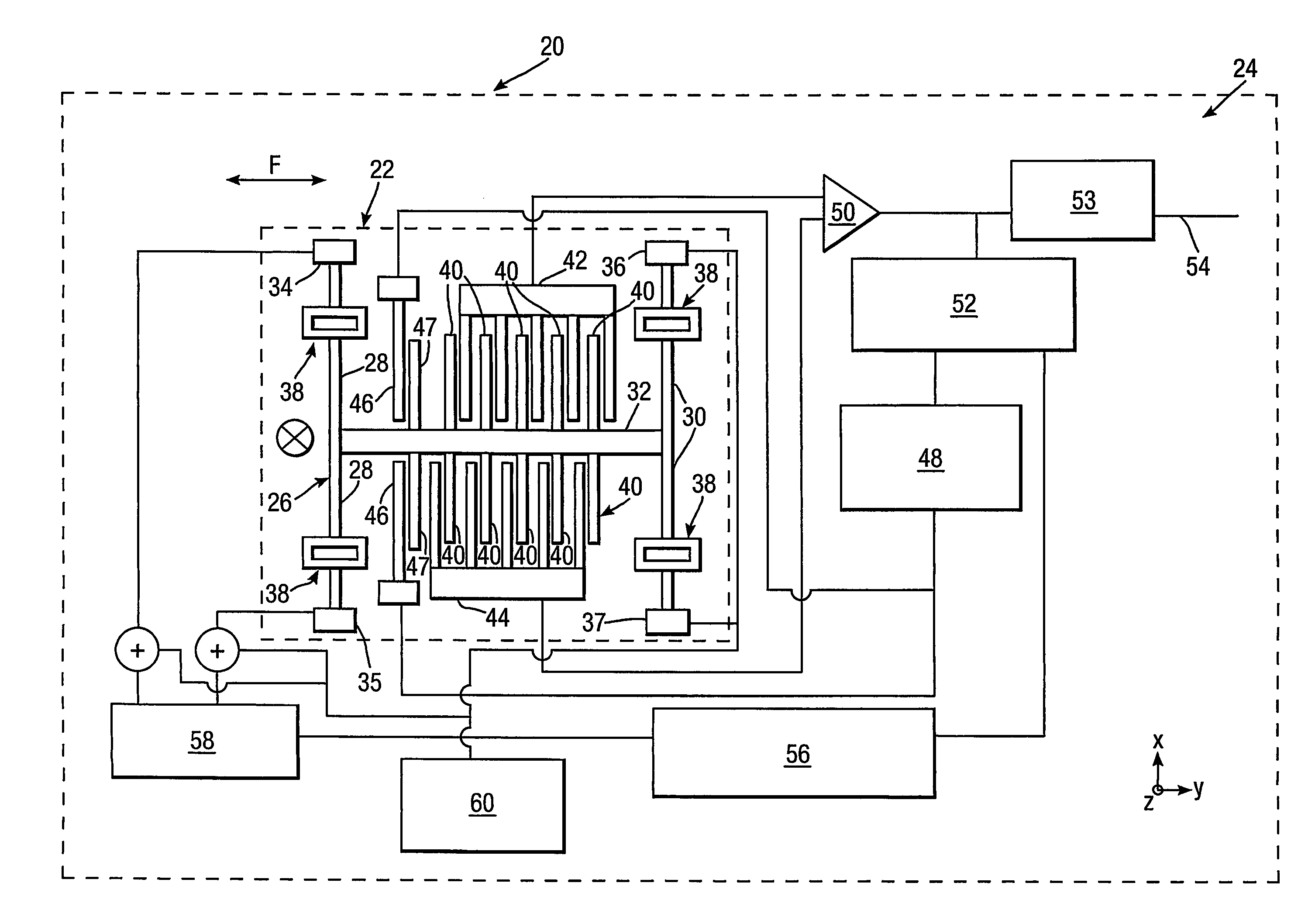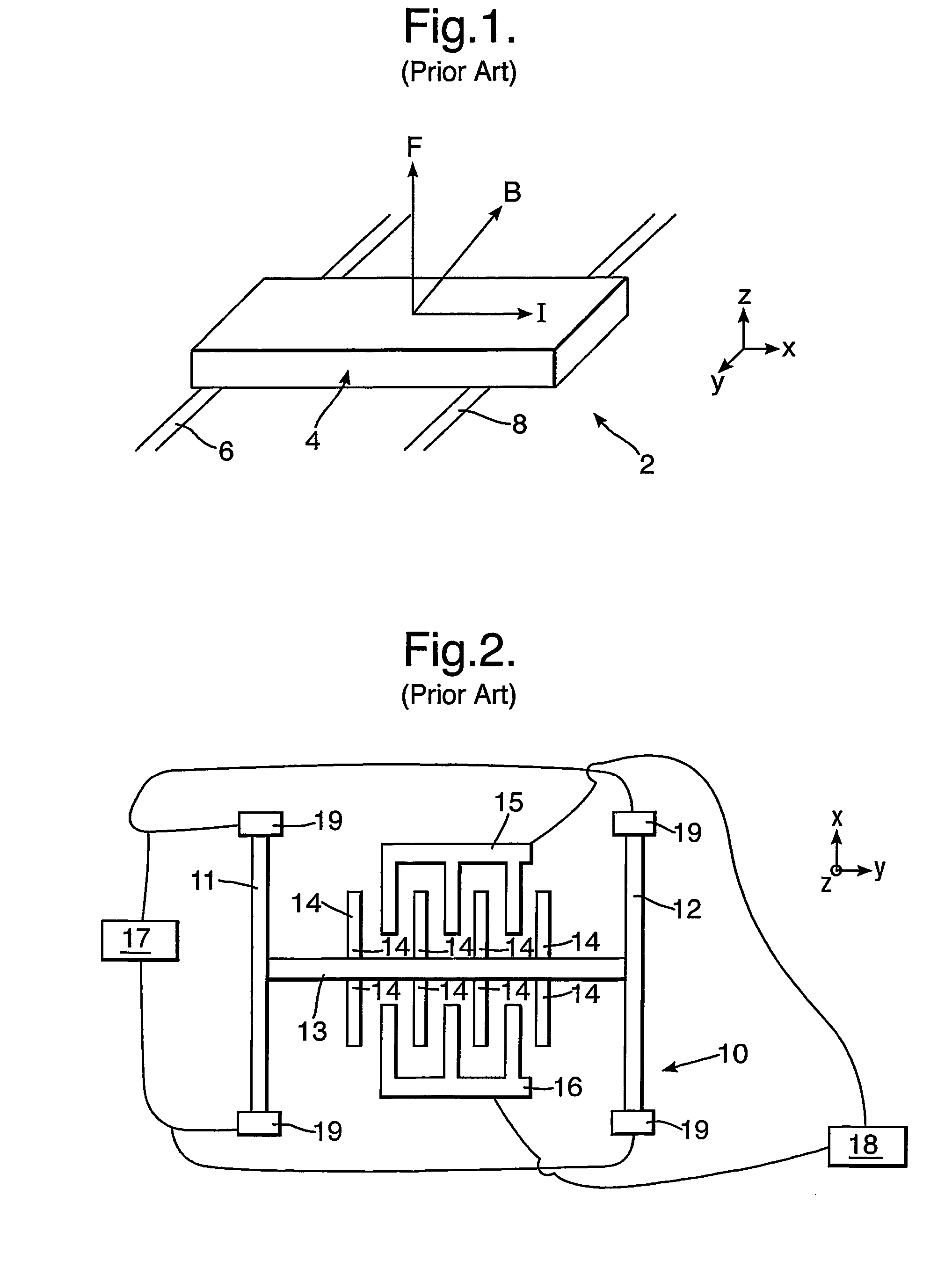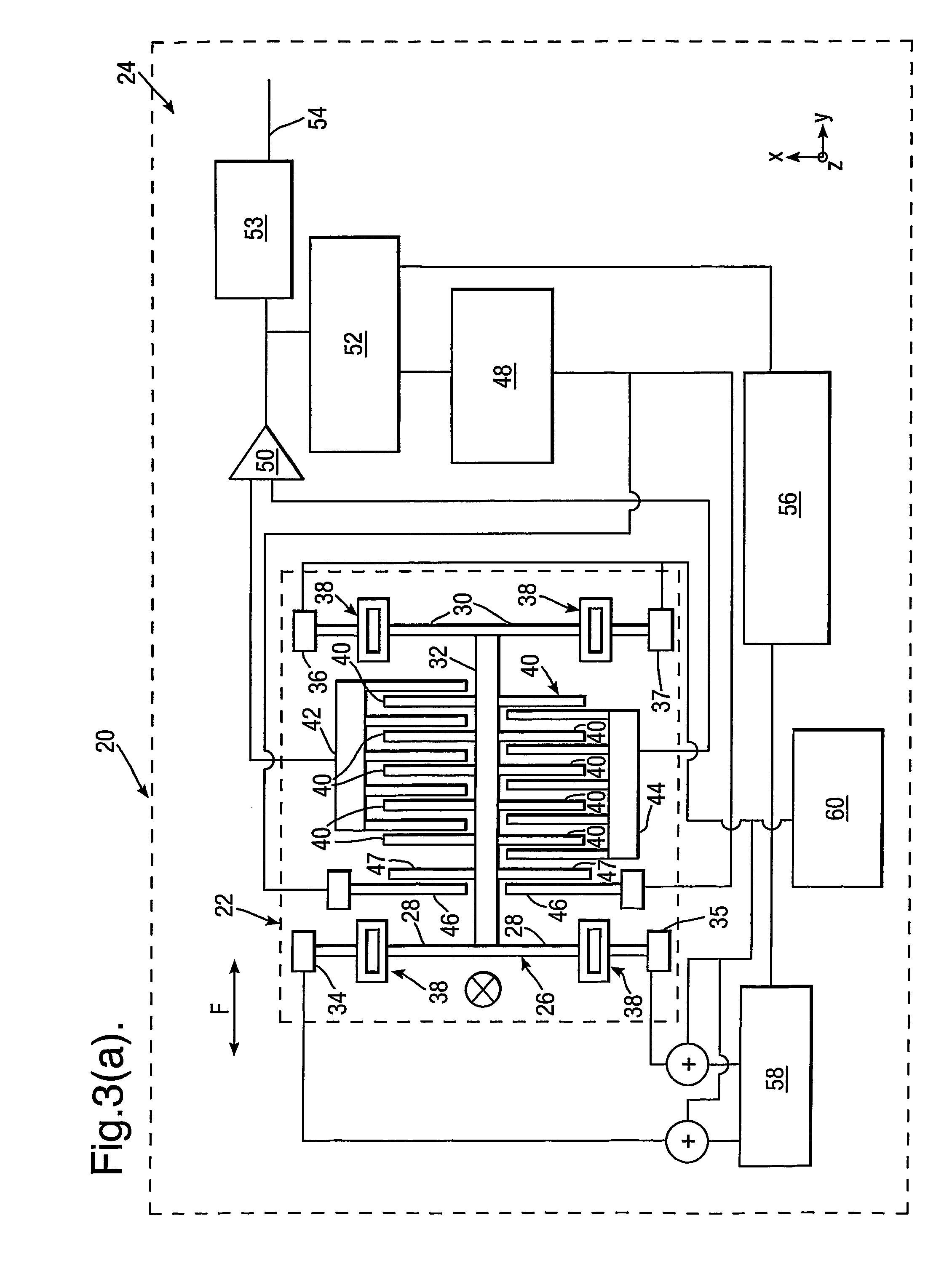Resonant magnetometer device
- Summary
- Abstract
- Description
- Claims
- Application Information
AI Technical Summary
Benefits of technology
Problems solved by technology
Method used
Image
Examples
Embodiment Construction
[0056]Referring to FIG. 1, a simple bar magnetometer 2 of the type described by Wickenden et al is shown. The magnetometer comprises a resonant bar 4 supported by a first electrode 6 and a second electrode 8. The first and second electrodes 6 and 8 are located at the nodal points of the fundamental mode of vibration of the bar 4.
[0057]An electrical current (I) passing through the bar 4 will, on interaction with a magnetic field (B), produce an out-of-plane Lorentz force (F). In use, an alternating current (AC) is applied to the bar 4 via the first electrode 6 and the second electrode 8. The frequency of the applied AC is matched to the resonant frequency of the resonant bar 4 thereby causing the device to resonate in the presence of a in-plane magnetic field (B). For a given applied current, the magnitude of resonance is indicative of the magnitude of the applied magnetic field. This Lorentz force effect forms the basis of operation of all resonant magnetometers.
[0058]Referring to F...
PUM
 Login to View More
Login to View More Abstract
Description
Claims
Application Information
 Login to View More
Login to View More - R&D
- Intellectual Property
- Life Sciences
- Materials
- Tech Scout
- Unparalleled Data Quality
- Higher Quality Content
- 60% Fewer Hallucinations
Browse by: Latest US Patents, China's latest patents, Technical Efficacy Thesaurus, Application Domain, Technology Topic, Popular Technical Reports.
© 2025 PatSnap. All rights reserved.Legal|Privacy policy|Modern Slavery Act Transparency Statement|Sitemap|About US| Contact US: help@patsnap.com



